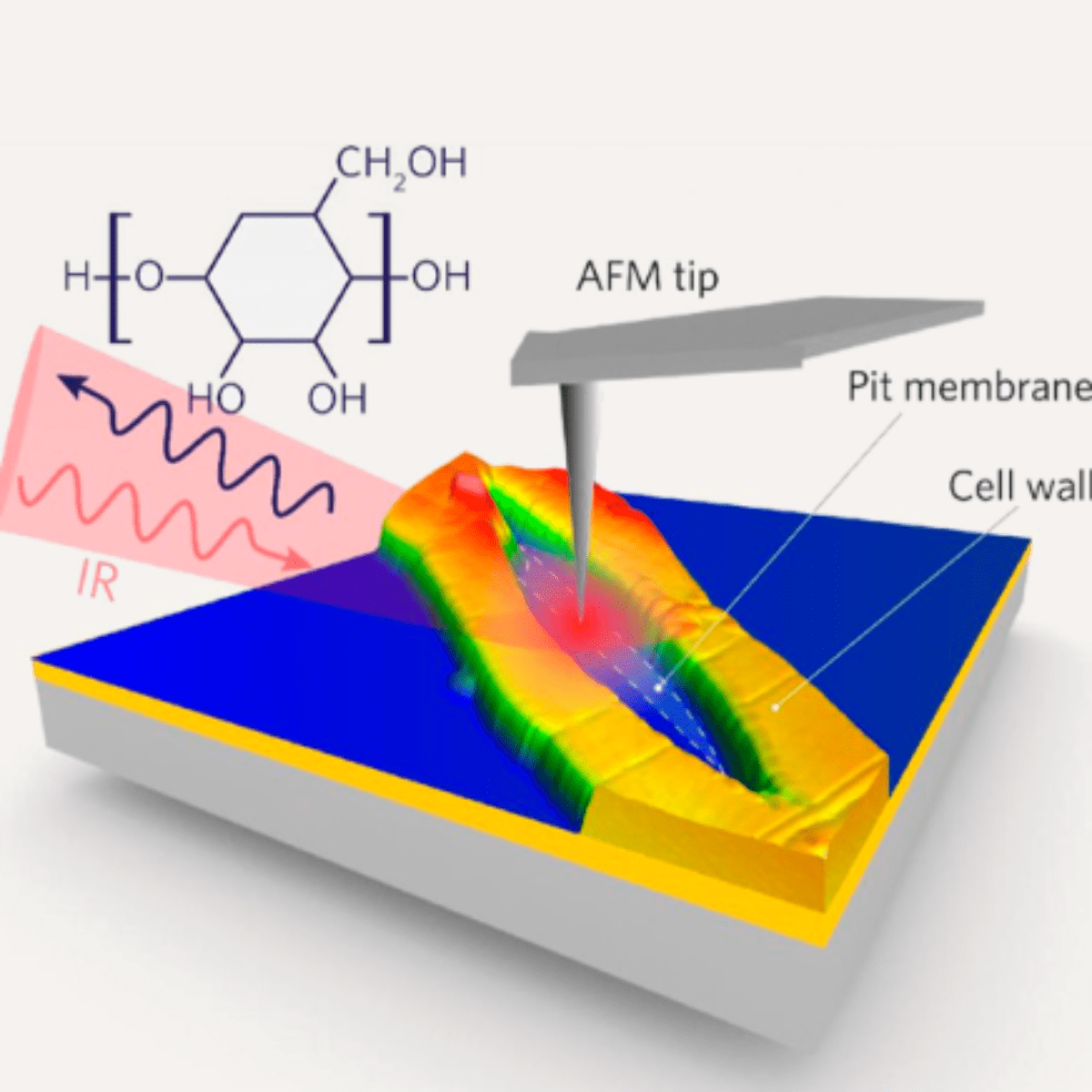
Research investigates the chemical nanostructure of water conducting vessels
Plant cells are encased in a structure called the cell wall, composed mainly of cellulose and lignin. Among other functions, this wall gives structural stability to the cells and controls the entry of water, minerals and other substances. When they die, the cells leave behind their cell wall, forming different structures that support the plant giving rigidity to the stems and that facilitate the transport of substances from the roots to the leaves and vice versa. One such structure is the xylem: a continuous network of conduits about 100 micrometers in diameter that carries the water absorbed by the roots to the leaves.
When they lose water by transpiration, the leaves generate tension in the water column within the xylem. The pressure difference between the interior and exterior of the conduit causes the molecules to behave as links in a current: when a molecule of water evaporates, the rest of the “current” is pulled up.
During periods of drought, in which plant transpiration increases, the interior pressure of the conduit may become much smaller than outside. Under these conditions, the formation of bubbles of gases previously dissolved in the water absorbed by the plant or present in tissues peripheral to xylem occurs. This phenomenon, called embolism, leads to the interruption of water transport through the conduits.
Embolism and the consequent interruption of water transport should be a frequent occurrence, but it is not! However, the mechanism by which plants can prevent the formation of bubbles is still an enigma.
In angiosperm plants (a class of plants in which seeds are wrapped in fruits), a porous cellulose membrane a few hundred nanometers thick, called the pit membrane, connects the conducting vessels.
In a situation of water restriction, when the tension in the water column becomes larger and the occurrence of bubbles is also greater, these membranes become safety valves, not allowing the bubbles to spread between the conduits. In more extreme cases, however, bubbles can traverse the nanopores of this membrane and trigger bubbles in the next conduit.
The activity of these valves seems to be related to the chemical composition of the membranes separating the conduits. In principle, if the membrane is composed of more, or less, hydrophilic substances, bubble formation is hindered or facilitated, respectively.
Until recently, it was believed that these membranes were simply composed of cellulose, by their appearance in electron microscopy images. And precisely because of its small size, the chemical composition of this membrane was not directly identifiable by any available method.

Schematic figure of the technique of infrared nanospectroscopy
In this context, Luciano Pereira et al. [1] used the IR1 infrared nanospectroscopy beamline from the Brazilian Synchrotron Light Laboratory (LNLS) to investigate the chemical composition of the pit membranes with high spatial resolution.
Using the LNLS facilities, the researchers were able to identify several compounds, such as proteins and phenols, in the membranes of the P. nigra wood. This demonstrates that plants must have mechanisms much more elaborate than previously thought for the control of the bubbles and for the correct water transport, depending on the composition of the membranes.
In addition to the study of other groups of plants, the information obtained in this research can be used in the development of new models for understanding the reasons why some species capable of resisting embolism. Thus, according to the researchers, it will also be possible to select characteristics of drought-resistance in cultivated plants, which can provide higher productivity and lower losses for agriculture.
Source: [1] Luciano Pereira, Denisele N.A. Flores-Borges, Paulo R.L. Bittencourt, Juliana L.S. Mayer, Eduardo Kiyota, Pedro Araújo, Steven Jansen, Raul O. Freitas, Rafael S. Oliveira, Paulo Mazzafera, Infrared Nanospectroscopy Reveals the Chemical Nature of Pit Membranes in Water-Conducting Cells of the Plant Xylem, Plant Physiology Aug 2018, 177 (4) 1629-1638. DOI: 10.1104/pp.18.00138
Research identifies new antibodies with potent activity against virus and infected cells
Research obtains 3D images of catalysts under reaction by Bragg coherent X-ray diffraction